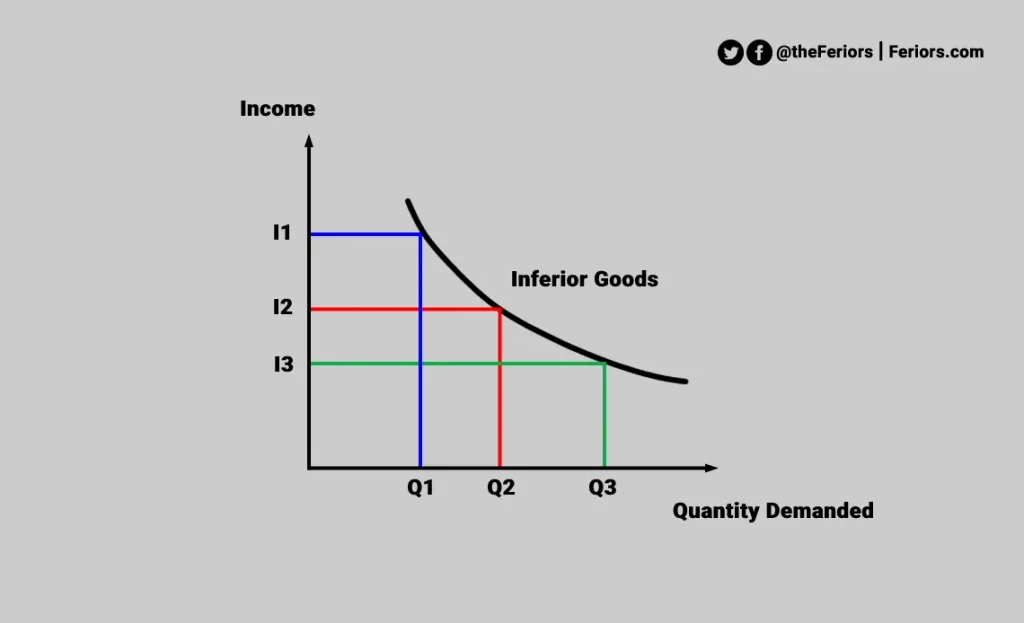What are Inferior Goods
Inferior goods are goods that the demand increases when the consumers’ income decrease. Conversely, the consumers’ will demand fewer inferior goods when their income increases. In other words, inferior goods are goods that people need when they have lower income but no longer when they are richer.
The inferior goods are the opposite of the normal goods since the demand for the inferior goods increases as consumers’ income decrease, rather than increasing demand when the consumers’ income increase.
The good examples of the inferior goods are when people switch to no branded products or services such as store brands (also known as house brands or own brands), economy class travel, and frozen foods to cut their living costs when their income decreases.
Normally, the quantity demand for inferior goods increases during a recession because the income of consumers during a recession usually decreases.
Inferior Goods Elasticity
The income elasticity of demand explains the relationship between the change in demand and the change in consumers’ income. The income elasticity of demand state that the inferior goods have a negative income elasticity of demand (E < 0), when the percentage of consumers’ income decrease, the percentage of inferior goods demand increase.

As the graph above, when the consumers’ income is decreased from I1 to I2, the quantity demand for inferior goods is increased from Q1 to Q2.
Frequently Asked Questions
Inferior goods are goods that the demand increases when the consumers’ income decrease. Conversely, the consumers’ will demand fewer inferior goods when their income increases.
The income elasticity of demand state that the inferior goods have a negative income elasticity of demand (E < 0).
The good examples of the inferior goods are when people switch to no branded products or services such as store brands (also known as house brands or own brands), economy class travel, and frozen foods to cut their living costs when their income decreases.




